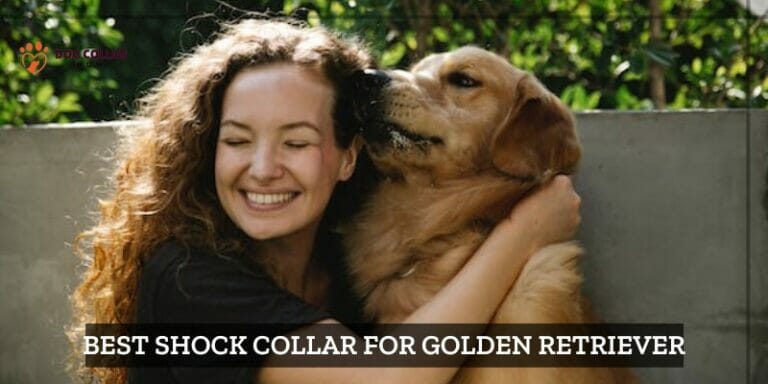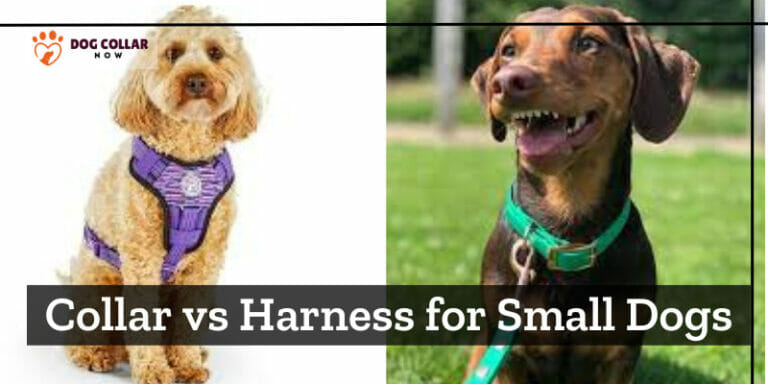Should Dog Wear Collar In Crate? | Pros and Cons to Consider

If you’re a dog owner who frequently uses a crate, the question of whether or not your furry friend should be wearing their collar while inside is likely to have crossed your mind.
Some argue that collars should always be left on as a safety precaution, while others believe that removing the collar can prevent discomfort and potentially harmful situations.
While there are benefits to using a collar in the crate, such as identification and control, there are also risks to consider, such as choking and injuries.
I’ve done the research and gathered expert opinions to help you make an informed decision about should dog wear collar in crate. Whether you’re a seasoned pet owner or new to the world of dogs, this informative guide will provide all the answers you need!
Should Dog Wear Collar In Crate – Complete Guide
There are several reasons why it may not be the best idea.
- Wearing a dog collar in the dog crate can increase the risk of choking or getting caught on the crate’s bars or other objects.
- A panicked or anxious pup may struggle to get free, leading to injuries or even death.
- If a dog is left unsupervised for an extended period, a neckband can become entangled with the crate, causing serious harm.
- Wearing a choker in the crate can cause unnecessary stress and discomfort for the dog.
- Chokers are designed to be worn for short periods during walks or playtime, not for extended periods in a confined space. A dog’s natural urge to scratch or chew on the collar can lead to irritation, sores, or even infection.
- There are alternatives to using collars in crates such as microchipping, harness etc
Benefits Of Using A Collar In The Crate
Using a collar in the crate can offer several benefits.
Identification Purposes
It can serve as a means of identification. If your dog were to escape or become lost, having a collar with identification tags can help ensure their safe return.
Safety Reasons
It can offer safety benefits by allowing you to attach a leash for easy handling during transport or emergency situations.
Training Aids
A collar can also be a helpful training aid, allowing for easy correction of unwanted behavior.
Peace Of Mind For Owners
Lastly, it can provide peace of mind for owners, knowing that their pet is easily identifiable and secure in their crate.
Potential Risks Of Using A Collar In The Crate
While using a collar in the crate may offer benefits, there are also potential risks to consider.
Strangulation Risks
One of the biggest risks is the potential for strangulation if the collar were to get caught on the crate or other objects.
Choking Hazards
Choking hazards are also a concern if the collar is too tight or if the dog were to chew on it.
Physical Discomfort For The Dog
A collar may cause physical discomfort for the dog, especially if it is too tight or if it rubs against their skin.
Emotional Distress For The Dog
Lastly, it may cause emotional distress for the dog if they are not used to wearing a choker for extended periods or if they find it uncomfortable.
When Should You Not Put A Collar On Your Dog In A Crate?
- During Unsupervised Crate Time:
If you are not going to be around to supervise your dog while they are in the crate, it is best to remove the collar to avoid any potential risks.
- During Playtime In The Crate:
If you allow your dog to play in the crate, it is best to remove the collar to reduce the risk of choking or suffocation. Playtime can be rough, and the collar may get caught on something in the crate or around the dog’s neck, leading to injury.
- If Your Dog Has A Medical Condition:
Some dogs may have medical conditions that make wearing a collar uncomfortable or even dangerous. For example, dogs with respiratory issues may have difficulty breathing if the collar is too tight or puts pressure on their neck. In these cases, it is best to consult with your veterinarian to determine the best course of action.
- If Your Dog Is Prone To Anxiety Or Panic:
Dogs that are prone to anxiety or panic may become distressed if they feel trapped or confined. If a collar is adding to their discomfort, it may be best to remove it to reduce their anxiety levels.
Can My Dog Wear A Seresto Flea And Tick Collar In Their Crate?
The short answer is yes, your dog can wear the Seresto flea and tick collar in their crate.
It’s important to monitor your dog’s behavior while wearing the collar in their crate. Some dogs may experience irritation or discomfort from wearing the collar for long periods, so be sure to check for any signs of skin irritation or discomfort
If you notice any signs of discomfort, you may want to consider removing the collar during crate time.
Another important consideration is to make sure the collar fits properly. The Seresto collar comes in different sizes for different dog breeds, so make sure to choose the correct size and adjust it according to the manufacturer’s instructions.
A loose collar can pose a choking hazard, while a tight collar can cause irritation and discomfort.
Alternatives to using a collar in the crate
- Microchipping:
Microchipping is a permanent form of identification that involves inserting a tiny chip under the dog’s skin. This chip can be scanned to retrieve the owner’s contact information, making it a reliable way to identify the dog if it ever gets lost.
- Harnesses:
Harnesses can provide a safer alternative to collars, especially for dogs that pull on their leash. They distribute the pressure more evenly across the dog’s body, reducing the risk of choking or injury.
- Personalized Crate Tags:
Similar to identification tags on collars, personalized crate tags can be attached to the outside of the crate with the dog’s name and owner’s contact information. This can be helpful in case of an emergency or if someone needs to contact the owner while the dog is in the crate.
- Removing The Collar While In The Crate:
If the dog is wearing a collar for identification purposes, it may be possible to remove it while the dog is in the crate to avoid the potential risks associated with leaving it on.
Ultimately, the choice of whether to use a collar in the crate or opt for an alternative comes down to personal preference and the specific needs of the dog. It is important to weigh the benefits and risks carefully before making a decision.
Conclusion
The decision of whether to put a collar on your dog in a crate should be carefully considered based on your individual dog’s needs and temperament.
While there are benefits to using a collar in the crate, such as identification purposes and safety reasons, there are also potential risks, including choking and emotional distress for the dog. Alternatives to using a collar in the crate include microchipping, personalized crate tags, harnesses, and removing the collar while in the crate.
Ultimately, make sure that whatever decision you make about collars for your pup’s safety remains comfortable for both of you! Remember, the safety and well-being of your furry friend should always be the top priority.
FAQs:
Should I leave my dog’s collar on when they are in their crate?
It’s recommended to remove your dog’s collar before placing them in their crate to prevent any potential choking risks. However, make sure your dog’s ID tag is still on their collar in case they get out of their crate and go missing.
Is it safe for my puppy to wear a collar in their crate?
It’s generally not recommended to leave a puppy with a collar on while they are in their crate, especially when unsupervised. Puppies are known to be more curious and may get their collar caught in the crate, which can pose a strangulation risk.
Can I keep my adult dog’s collar on while they are in their crate?
It’s up to the dog owner’s discretion whether or not to remove their dog’s collar when they’re in their crate. However, if you choose to leave the collar on, make sure it’s not too tight and it doesn’t bother your dog while they are trying to sleep.
Should I take my dog’s collar off at night when they are in their crate?
It’s a good idea to remove your dog’s collar at night when they are in their crate to prevent any potential risks. Your dog won’t be supervised while sleeping, and there’s a chance that their collar may get caught in their crate, causing a potential strangulation risk.
Can my dog wear a collar in their crate if they have another dog in there with them?
If there’s more than one dog in the crate, it’s best to remove their collars to prevent any entanglement or fighting over the collar. This is especially important if the dogs are left unsupervised in the crate.
Is it safe to leave my dog’s collar on when they are sleeping in their crate?
If your dog sleeps in their crate, it’s best to remove their collar before sleeping.






